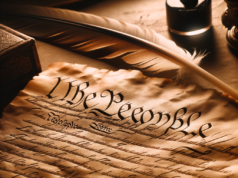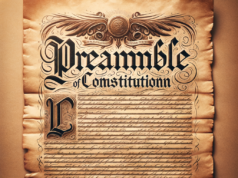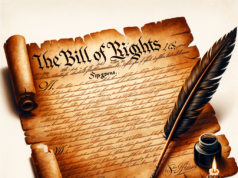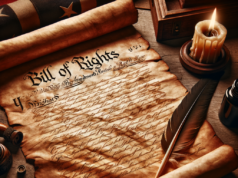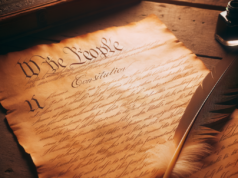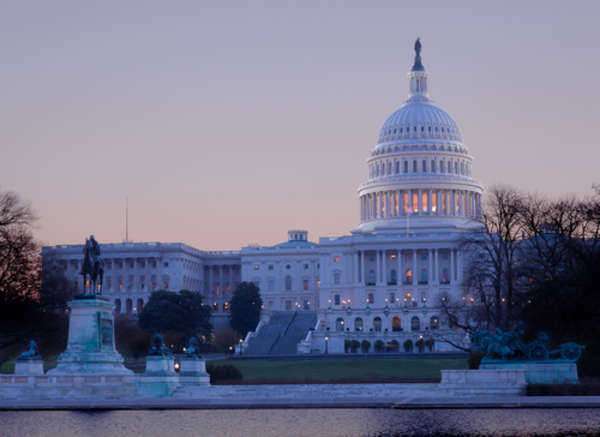
The Constitutional Convention: Forging a New Path towards American Democracy
Introduction:
The Constitutional Convention holds a significant place in American history as the event that paved the way for the creation of the United States Constitution. Convened in 1787 in Philadelphia, this convention brought together delegates from thirteen states to address the flaws and shortcomings of the Articles of Confederation. In this article, we will delve into the purpose, key players, major debates, and the lasting impact of the Constitutional Convention.
The Call for Change:
The period following the American Revolutionary War exposed the weaknesses of the Articles of Confederation, which lacked central authority, a unified economic policy, and the power to enforce decisions. Recognizing the urgent need for change, the Founding Fathers called for a convention to revise the existing system and establish a more effective framework for governance.
Key Figures and their Roles:
The Constitutional Convention showcased an assembly of brilliant minds, including George Washington, Benjamin Franklin, James Madison, Alexander Hamilton, and many others. These influential figures, hailing from diverse backgrounds and with varying political views, collaborated to shape the future of the nation. George Washington’s leadership as the convention’s president played a crucial role in guiding the deliberations, while James Madison is often credited as the “Father of the Constitution” for his tireless efforts in documenting the proceedings.
Debates and Compromises:
Delegates at the Constitutional Convention engaged in spirited debates on numerous contentious issues, striving to strike a balance between state autonomy and a strong central government. Arguments revolved around representation, the division of powers, and the protection of individual rights. The Connecticut Compromise, also known as the Great Compromise, resolved the dispute between large and small states by creating a bicameral legislature consisting of the Senate, with equal representation for all states, and the House of Representatives, apportioned based on population.
The Three-Fifths Compromise, although highly controversial, addressed the question of slavery’s impact on representation. It determined that enslaved individuals would be counted as three-fifths of a person for both representation and taxation purposes. While this compromise appeased southern states, it ultimately perpetuated the institution of slavery until its abolition years later.
Creating a Durable Framework:
The Founding Fathers’ collective wisdom and commitment to avoiding tyranny led to the development of a system of checks and balances. This separation of powers divided governmental authority among the executive, legislative, and judicial branches. By limiting each branch’s powers and establishing mechanisms for oversight, they ensured that no single entity could exert unchecked dominance over the others, thus safeguarding individual liberties and preserving the democratic nature of the republic.
Ratification and Legacy:
Following the completion of the Constitution, it required ratification by nine states to take effect. Debates over its merits ensued in state conventions, culminating in a series of passionate arguments expressed through writings like the Federalist Papers penned by Alexander Hamilton, James Madison, and John Jay. These influential essays effectively advocated for the adoption of the Constitution, assuaging concerns and persuading citizens of its benefits.
Conclusion:
The Constitutional Convention of 1787 stands as a monumental event in American history, where visionaries sought to address the flaws of the early government and create a stronger union. Through intense debates and difficult compromises, the framers of the Constitution established a framework that has endured for over two centuries. Their foresight and dedication to democratic principles, as exemplified by the separation of powers and the protection of individual rights, laid the groundwork for the nation’s success. The Constitutional Convention remains an enduring testament to the collaborative spirit and intellectual brilliance that birthed the United States of America as we know it today.
Even prior to the Constitutional Convention of 1787, due to the chaos that ensued as a result of the flawed gubernatorial model established in Articles of Confederation, a complete adjustment of the national legislative schematic was already set in motion by not only Federalists Alexander Hamilton and James Madison, but also by figureheads such Benjamin Franklin and George Washington.
In 1785, a conference was held in Mt. Vernon, Virginia, which was initially held in order to determine a course of action for the circumvention of the Potomac River.
Due to the Articles of Confederation’s vague criterion concerning interstate legislation, which ultimately disallowed the establishment of determining any sort of state borders in regards to the Potomac River – it spanned across multiple states such as Maryland and Virginia. As a result, the delegates at the conference proposed a nationwide convention in Philadelphia with the hopes of completely reformatting the existing governmental schematic – this was known as the Constitutional Convention.
The Constitutional Convention began at Independence Hall in Philadelphia on May 5th, 1787, and ended up on the completion of the final draft of the Constitution on September 17th, 1787. The Constitutional Convention was comprised of 55 delegates from 12 of the 13 states of the Union. Rhode Island, protesting the proposed ideals set forth in the Constitution, refused to send any delegates.
The Constitutional Convention was presided over by George Washington, a delegate from Virginia, and the future first President of the United States. The actual content of the Constitution is considered to be a conglomeration of ideas contributed by various politicos of that time, including Thomas Jefferson, James Madison, Thomas Paine, and John Adams.
Despite an initial desire to simply modify the precepts set forth in the Articles of Confederation, delegates participating in the Constitutional Convention found the existing gubernatorial and legislative systems unworkable, and as a result, created an entirely new document, which would become the Constitution of the United States. Rhode Island’s vehement opposition of the abolition of the Articles of Confederation prompted their refusal to send delegates to the Constitutional Convention.
The legislative methodology set forth in the Articles of Confederation maintained that any amendment of legislation, which was precisely the purpose of the Constitutional Convention, could not take place without the unanimous approval of each of the 13 states of the Union. Yet, the refusal to participate on the part of Rhode Island’s State Legislature was perceived to be laden with irony by the Federalists. The Federalists maintained that a single state’s ability to sway a decision on a national scale was inherently paradoxical.
However, even without the participation of Rhode Island, the Constitutional Convention commenced. The remaining 12 states grew tired of perpetual legislative ambiguity and erratic trade policies. The Constitutional Convention would cover a host of issues, both legislative and commercial, such as the role of the central government, state representation, taxes, tariffs, the establishment of borders, and slavery.



